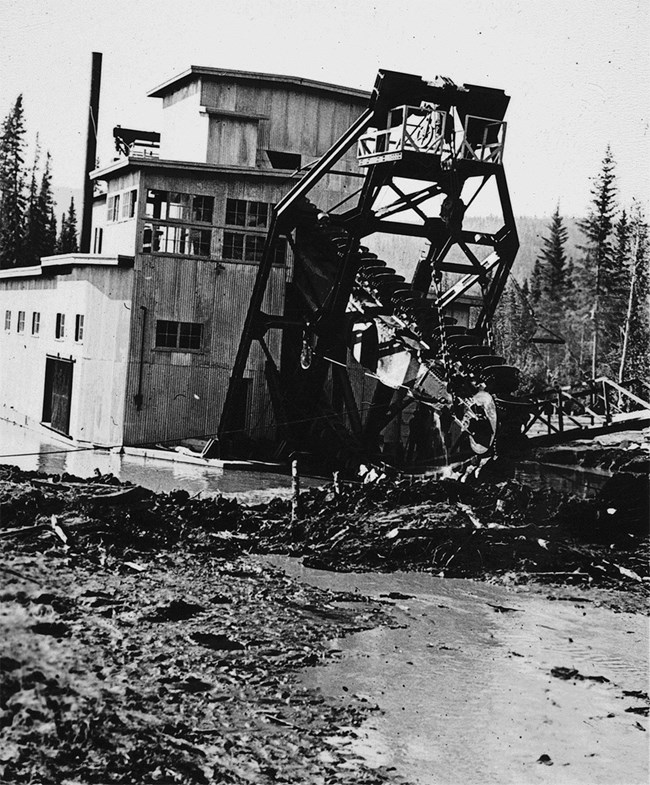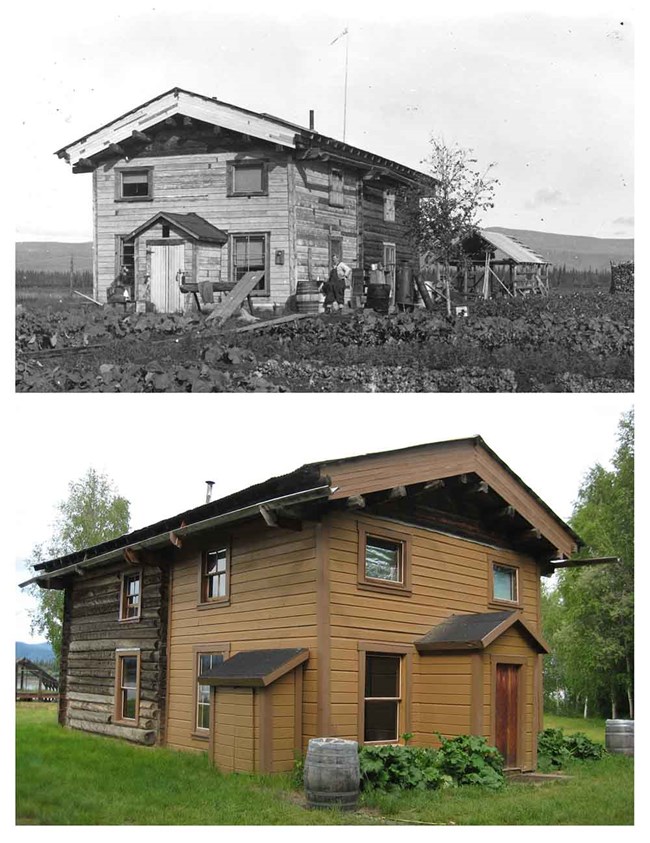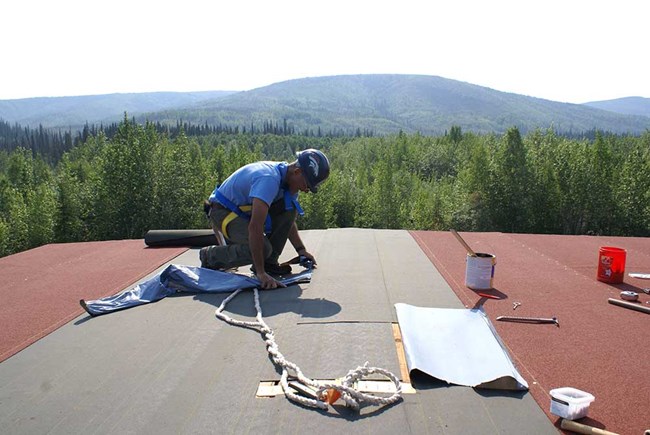Part of a series of articles titled Commemorating ANILCA at 40.
Previous: The Best Job in the World!
Article

SEATTLE PUBLIC LIBRARY, ARTHUR C. PILLSBURY PHOTOGRAPHS
On December 2, 1980, when President Carter signed the Alaska National Interest Conservation Lands Act (ANILCA) into law, he declared, “Never before have we seized the opportunity to preserve so much of America’s natural and cultural heritage on so grand a scale.” The scope of the new legislation was indeed grand: it created ten new national park units and added to three existing parks for a total of 43.6 million acres of new national parklands. In addition, nearly 54 million acres became new wildlife refuges, and of all the land protected by ANILCA, almost 57 million acres would become designated wilderness, tripling the size of the National Wilderness System. Environmental advocates across the nation were delighted, and it was clear from the president’s comments after the signing that his primary concern was “the living earth” and the damaging effects of industrial development. However, cultural heritage was also on the agenda, and the new law provided direction for some of the new park units regarding history, archeology, and the study of Alaska Native cultures past and present. In the case of Yukon-Charley Rivers National Preserve, the wording was more specific than most.
In addition to calling for protection of the “undeveloped natural condition” of the preserve’s 2.5 million acres, a habitat for moose, Dall sheep, grizzly bears, wolves, and peregrine falcons, the architects of ANILCA explained that the preserve was also intended to “protect and interpret historical sites and events associated with the gold rush on the Yukon River…” (Title II, Section 201). This purpose was unlike those assigned to other ANILCA lands—it was more targeted, more specific to a particular event: in this case, the Klondike-Alaska Gold Rush of 1897-1899. Other National Park Service units created by ANILCA included cultural mandates. Bering Land Bridge National Preserve and Cape Krusenstern National Monument were created, in part, to pursue precontact archeology, to interpret archeological sites associated with Alaska Native cultures, and to study the peopling of the Americas. Likewise, Kobuk Valley National Park and Noatak National Preserve were called upon to “protect and interpret archeological sites associated with Native cultures.” In other cases, however, cultural resources were overlooked, as with Wrangell-St. Elias National Park and Preserve, another ANILCA creation, that has a rich copper-mining past and dramatic mining infrastructure but received no direction at all regarding historic resources.
Yukon-Charley Rivers National Preserve’s history mission aligned it closely with Klondike Gold Rush National Historical Park, which was created in 1976 to preserve historic structures and trails associated with the rush to the Klondike gold fields. The two parks have much in common, with Klondike Gold Rush National Historical Park focusing on the southern end of the stampeders’ journey—including Skagway’s historic downtown and the twin mountain routes of Chilkoot and White Pass—and Yukon-Charley Rivers National Preserve focused on mining activity that spilled out of the Canadian Klondike and spread across Alaska via the Yukon River. The two other park units in Alaska dedicated primarily to historical themes are Sitka National Historical Park, with its focus on Tlingit culture and Alaska’s Russian colonial period, and the Aleutian Islands World War II National Historic Area, based in Unalaska. In a state where national parks are most often associated with wildlife and wilderness values, these parks each have enabling legislation that articulates which historical events and historical themes are important. Those few words have power.
The search for gold in the areas in and around today’s Yukon-Charley Rivers National Preserve dates back to the 1870s when the fur traders Al Mayo, Jack McQuesten, and Arthur Harper began discovering what they called “colors” in creeks along the southern side of the Yukon River. In 1886, gold was discovered along the Fortymile River, which straddled the international boundary with Canada. And, in 1893, more than 150 miles to the west at Birch Creek, prospectors found another rich gold field and founded Circle City as a supply depot. All of this activity was mere prelude to the explosive news in 1897 that gold on the Klondike River, in Canadian territory, lay, in the words of its discoverer, “between flaky slabs of rock like cheese in a sandwich.” Over the next two years, an estimated 100,000 gold-seekers began the long and arduous journey northward, though many gave up for lack of money or confidence. Between 30,000 and 40,000 made their way to the boomtown of Dawson City and to various points in Alaska where lesser stampedes were unfolding. This sudden pulse of economic activity permanently and profoundly changed Alaska.

ALASKA & POLAR REGIONS COLLECTIONS AND ARCHIVES, EVERETT S. HAMMAN PHOTOGRAPHS
During the rush, paddlewheel steamboats carried gold-seekers along the Yukon and other river systems, and in winter, dog-sled trails extended from the Klondike and Dawson across the boundary to American gold camps at Fourth of July Creek, Charley River, Sam and Ben creeks, Coal Creek, and Woodchopper Creek—all of which are today within Yukon-Charley Rivers National Preserve. In addition, the mining camp of Eagle City, just eleven miles on the American side of the border, grew into an administrative center and supply depot for the miners working on surrounding rivers and creeks. The mining in those early years was arduous, the gold scant, and most people abandoned their claims when gold was discovered near Nome in 1899 and Fairbanks in 1903. Nevertheless, a tradition of placer mining continued along this stretch of the Yukon River and burgeoned in the 1930s with the arrival of two gold dredges at Coal Creek and Woodchopper Creek (Figure 1). These mechanical behemoths could excavate and process 3,000 cubic yards of gravel in a day and they continued to yield profits through the 1950s. In later years, individuals leased the same mining claims, tried their hands at dredging, and settled on using bulldozers, hydraulic pumps, and sluice boxes to pull gold from the earth. Because of the area’s lengthy gold-mining history, the ANILCA mandate to protect and interpret “the gold rush on the Yukon River” is interpreted broadly to include mining activity before, during, and after the relatively brief Klondike-Alaska rush.
In the decade before ANILCA, park planners drew lines on maps and calculated the best ways to convince Congress and the American public of the merit of new park units. Historian Melody Webb was one of the people hired to make the case for what became Yukon-Charley Rivers National Preserve. In addition to archival work, Webb enlisted the help of a local trapper as a guide and spent a summer combing the 110 miles of the Yukon River between Eagle and Circle for historic sites. In the process she documented a wide variety of old roadhouses, trapping cabins, mines (both abandoned and active), mining-related machinery, and man-made features like trails, ditches, and the tailings piles left over from placer mining.
She produced Yukon Frontiers: Historic Resources Study for the Proposed Yukon-Charley National River (1977) and relied on the same research to write The Last Frontier: A History of the Yukon Basin of Canada and Alaska (1985), which remains the only comprehensive study of the region’s history. After the preserve became a reality, Douglas Beckstead added to knowledge of the preserve’s history with The World Turned Upside Down: A History of Mining on Coal Creek and Woodchopper Creek (2003) and I wrote Gold, Steel & Ice: A History of Mining Machines in Yukon-Charley Rivers National Preserve (2015). This sort of documentation is essential because most Americans will never visit the preserve, and those who do may float along the Yukon River and pass historic sites without knowing.
In addition to documentation and interpretation, ANILCA calls for park managers to also “protect… historical sites” which is a challenging and forever evolving element of the preserve’s mission. When a building or other structure is identified as meriting protection, park staff must apply the principles of historic preservation as detailed in The Secretary of the Interior’s Standards for the Treatment of Historic Properties (latest revision, 1995). This set of guidelines establishes general principles and best practices to protect our nation’s irreplaceable cultural resources. One of the central concepts of this work is to alter or destroy as little as possible of the “historic fabric,” or original material, when repairing a building and to take special care to retain the visual features that distinguish the structure. In Alaska’s backcountry, buildings are battered by sun, wind, rain, and snow, and they are often threatened by seasonal flooding, erosion, wildfire, insect infestation, and even damage from bears. And in Yukon-Charley Rivers National Preserve, each type of historic building or structure—including log cabins, frame-built mining camps, roadhouses, elevated log caches, or giant dredges on steel pontoons—ages differently and presents unique preservation challenges.

U.S. GEOLOGICAL SURVEY, JOHN B. MERTIE COLLECTION
Some of the first preservation efforts in Yukon-Charley Rivers National Preserve took place after 1986 when the National Park Service received ownership of former mining claims along the Coal Creek drainage. This parcel stretched roughly seven miles inland from the Yukon River and included the land dredged by Placer Golds, Inc. beginning in the mid-1930s. In addition to buildings in Coal Creek mining camp and the company’s gold dredge, the area included the two-story roadhouse built by mining old-timer Frank Slaven on the banks of the Yukon River. The roadhouse presented park managers with an opportunity to protect examples of industrial mining infrastructure from the 1930s but also to interpret mining activities dating back to the Klondike rush. Workers painted mining camp buildings (using colors matching the original), installed a new asphalt-shingle roof on the dredge, and made much-needed improvements to Slaven’s Roadhouse, where the building’s foundation logs were rotting and sinking into the earth (Figure 2). In addition, a professional hazardous materials remediation crew removed mercury from the ground near the camp’s Assay Building and disposed of old fuel and lubricant drums that littered the drainage. At the same time, historians completed a nomination to add the Coal Creek Historic District to the National Register of Historic Places, the nation’s official list of its important historical properties.
Historic preservation efforts continue in recent years. Within the Coal Creek Historic District, workers have replaced rotting foundation timbers and repaired damaged roofs on buildings at Cheese Creek, a Coal Creek tributary where the dredge was built in 1936 and where some of the first camp buildings remain. At Sam Creek, just a few miles up the Yukon River, a small cabin thought to be the oldest intact log structure in the preserve needed its roof expanded to deflect rain and snow as well as new spruce beams to reinforce the walls (Figure 3).

NPS/CHRIS ALLAN

NPS/CHRIS ALLAN
And, in 2017, the Coal Creek gold dredge was threatened by water leaking through its various roof surfaces. Over the course of three weeks, a crew removed the old, damaged asphalt roofing, replaced rotten roof boards, and installed new waterproofing and roofing material. Both inside and outside of the dredge, the same workers replaced rotten wood structures like stairs, walkways, and handrails, helping to ensure the safety of visitors (Figure 4). Challenges remain to doing historic preservation in remote locations—many sites can only be reached by airplane, boat, or helicopter, and the summer season is brief—but efforts will continue to protect the preserve’s historic resources and to share the area’s history with as many people as possible.
Other means exist to capture and share the preserve’s history with researchers, park managers, and the general public. One of the most enduring is the Historic American Building Survey and—particularly relevant to a region with mining infrastructure—the Historic American Engineering Record. Commonly known as HABS/HAER, this national program creates architectural drawings, historical narratives, and archival quality photography to document important historical properties. This work was first conducted in the national preserve in 1984 and experts returned to expand the work in 2015-2016. As technologies evolve, this type of work can also include 360-degree photography, laser scanning of the interiors and exteriors of buildings, and Internet-based virtual tours. Historians and others can conduct oral history interviews with people whose lives are intertwined with parklands, and we reach a wide audience through National Park Service websites and social media as well as brochures, posters, and presentations. Documenting and sharing park history can only be fully achieved by using all the tools and as much creativity as we can.
In celebrating the 40th anniversary of ANILCA, it is worth reflecting on the ways this legislation was groundbreaking, not merely because of the size of its re-designation of public lands, but also in the ways it differed from previous acts of park creation. With just a few words, ANILCA’s authors made clear that they were not banishing people from the land or ignoring their deep connections to these special places—one can see proof of this in the law’s protection of subsistence opportunities (Title VIII) and in the approval of hunting, trapping, and other activities in national preserves (Title XIII). And it was also strategic in directing park managers to pursue cultural topics and protect archeological and historical sites. In this way, ANILCA was perfectly aligned with the National Park Service’s own founding legislation, the Organic Act of 1916, with its own powerful words, that directs the agency to:
… conserve the scenery and the natural and historic objects and the wild life therein and to provide for the enjoyment of the same in such manner and by such means as will leave them unimpaired for the enjoyment of future generations.
Allan, T. C. 2010.
Locked Up! A History of Resistance to the Creation of National Parks in Alaska. Phd. diss. Washington State University. Pullman, WA.
Allan, C. 2015.
Gold, Steel & Ice: A History of Mining Machines in Yukon-Charley Rivers National Preserve, Special History Study. National Park Service. Fairbanks, AK.
Allan, C. 2015.
A history of National Park Service clean-up efforts at the historic Coal Creek Mining District, Yukon-Charley Rivers National Preserve. Natural Resource Report NPS/YUCH/NRR-2015/1099. National Park Service. Fort Collins, CO.
Allan, C. 2019.
The American Side of the Line: Eagle City’s Origins as an Alaskan Gold Rush Town, as Seen in Newspapers and Letters, 1897-1899. National Park Service. Fairbanks, AK.
Beckstead, D. 2002.
The World Turned Upside Down: A History of Mining on Coal Creek and Woodchopper Creek. National Park Service. Fairbanks, AK.
Norris, F. 2005.
Managing cultural resources in Alaska’s parklands. CRM: The Journal of Heritage Stewardship 2(2): 62-78.
Webb, M. 1977.
Yukon Frontiers: Historic Resources Study of the Proposed Yukon-Charley National River, Occasional Paper No. 8. Anthropology and Historic Preservation Cooperative Park Studies Unit. University of Alaska. Fairbanks, AK.
Webb, M. 1985.
The Last Frontier: A History of the Yukon Basin of Canada and Alaska. University of New Mexico Press. Albuquerque, NM.
Webb, M. 1987.
Cultural landscapes in the National Park Service. Public Historian 9(2): 77-89.
Williss, G. F. 2005.
Doing Things Right the First Time: The National Park Service and the Alaska National Interest Lands Conservation Act of 1980, Administrative History. National Park Service. Anchorage, AK.
Worthington, A, L. Hovis, S. F. Abby, G. Teague, and D. Beckstead. 2002.
Managing Historic Mining Artifacts on the Landscape. National Park Service. Anchorage, AK.
Part of a series of articles titled Commemorating ANILCA at 40.
Previous: The Best Job in the World!
Last updated: June 23, 2022